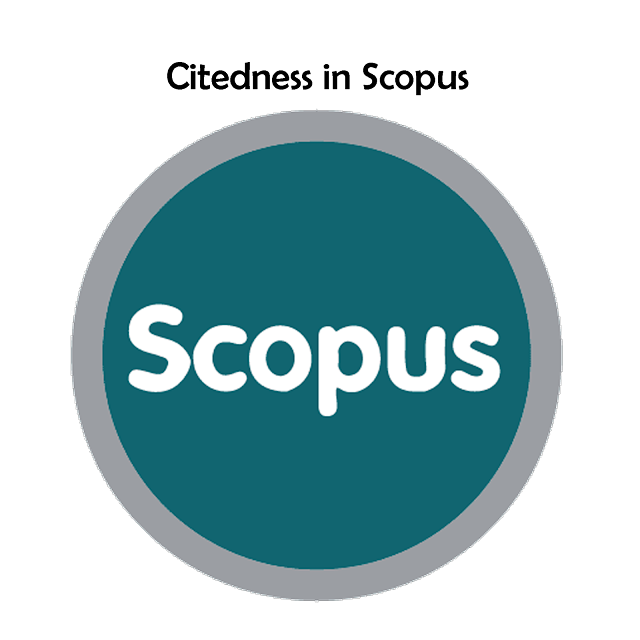The Application of Arduino-Based Line Follower Robotics Technology as a Tool to Enhance Students' Self-Efficacy
Abstract
Keywords
Full Text:
PDFReferences
Ananda, E. R., & Wandini, R. R. (2022). Analisis kemampuan literasi matematika siswa ditinjau dari self efficacy siswa. Jurnal Obsesi: Jurnal Pendidikan Anak Usia Dini, 6(5). http://repository.uinsu.ac.id/15928/ Bandura, A. (2006). Guide for Constructing Self-Efficacy Scales (Revised). Self-efficacy beliefs of adolescents, 5, 307–337. Budiyanto, C. W., Amri, S., Yuana, R. A., Widiastuti, I., & Harjunowibowo, D. (2023). Integrasi Computational Thinking Menggunakan Lego Robotika Pada Pembelajaran Pemrograman. DEDIKASI: Community Service Reports, 5(1). https://doi.org/https://doi.org/10.20961/dedikasi.v5i1.66483 Bush, S., Calloway, A., Bush, E., & Himelblau, E. (2022). A course-based teaching experience for STEM undergraduates improves student perceptions of teaching self-efficacy and attitudes toward teaching careers. CBE—Life Sciences Education, 21(1), ar7. https://doi.org/https://doi.org/10.1187/cbe.21-04-0105 Christi, S. R. N., & Rajiman, W. (2023). Pentingnya Berpikir Komputasional dalam Pembelajaran Matematika. Journal on Education, 5(4), 12590-12598. https://doi.org/https://doi.org/10.31004/joe.v5i4.2246 Cook, T. D., & Campbell, D. T. (2007). Experimental and quasi-experimental designs for generalized causal inference. Figures. Deprez, J., Peeters, E. R., & Gorgievski, M. J. (2021). Developing intrapreneurial self-efficacy through internships? Investigating agency and structure factors. International Journal of Entrepreneurial Behavior & Research, 27(5), 1166-1188. https://doi.org/https://doi.org/10.1108/IJEBR-09-2020-0642 Field, A. (2024). Discovering statistics using IBM SPSS statistics. Sage publications limited. Fonna, N. (2019). Pengembangan revolusi industri 4.0 dalam berbagai bidang. Guepedia. Fricticarani, A., Hayati, A., Ramdani, R., Hoirunisa, I., & Rosdalina, G. M. (2023). Strategi pendidikan untuk sukses di era teknologi 5.0. Jurnal Inovasi Pendidikan Dan Teknologi Informasi (JIPTI), 4(1), 56-68. https://doi.org/https://doi.org/10.52060/pti.v4i1.1173 Ilori, M. O., & Ajagunna, I. (2020). Re-imagining the future of education in the era of the fourth industrial revolution. Worldwide Hospitality and Tourism Themes, 12(1), 3-12. https://doi.org/https://doi.org/10.1108/WHATT-10-2019-0066 Jäggle, G., Lammer, L., Wiesner, J.-O., & Vincze, M. (2020). Towards a Robotics Self-Efficacy Test in Educational Robotics. https://www.researchgate.net/publication/341672333 Kadir, F., Permana, I., Saputra, I., & Azmar. (2023). Effect of Guided Discovery Methods on Students' Motivation and Learning Outcomes. Jurnal Penelitian Pendidikan IPA, 9, 9893-9898. https://doi.org/10.29303/jppipa.v9i11.4326 Karaoglan Yilmaz, F. G. (2022). Utilizing learning analytics to support students' academic self-efficacy and problem-solving skills. The Asia-Pacific Education Researcher, 31(2), 175-191. https://doi.org/https://doi.org/10.1007/s40299-020-00548-4 Latikka, R., Turja, T., & Oksanen, A. (2019). Self-efficacy and acceptance of robots. Computers in Human Behavior, 93, 157-163. https://doi.org/https://doi.org/10.1016/j.chb.2018.12.017 Massaty, M. H., Budiyanto, C. W., Tamrin, A., & Fahrurozi, S. K. (2024). The Future of Learning: Integrating Robotic Efficiency for Enhanced Educational Efficacy. Journal of Global Hospitality and Tourism Technology, 1(1), 1-9. https://doi.org/https://doi.org/10.5281/zenodo.11294759 Massaty, M. H., Budiyanto, C. W., & Tamrin, A. G. (2020). Revisiting the roles of educational robotics in improving learners’ computational thinking skills and their positive behaviour. Journal of Physics: Conference Series, 1511(1), 012088. https://doi.org/https://doi.org/10.1088/1742-6596/1511/1/012088 Peea, F., Anneke, D. R., & Naibaho, L. (2024). Revolusi Pemikiran: Memahami Peran Pendidikan dalam Menghadapi Era Teknologi 5.0. Jurnal Kridatama Sains dan Teknologi, 6(01), 25-33. https://doi.org/https://doi.org/10.53863/kst.v6i01.1067 Petrovič, P. (2022). Using microcontrollers for educational robotics in undergraduate university study program. EDULEARN22 Proceedings, 7631-7641. https://doi.org/https://doi.org/10.21125/edulearn.2022.1780 Rahmat, B., & Muljono, M. (2024). Pemrograman Internet of Things (IoT) dengan Arduino dan Python Jilid 1. Ratu, T., Sari, N., Mukti, W. A. H., & Erfan, M. (2021). Efektivitas Project Based Learning Terhadap Efikasi Diri dan Kemampuan Berpikir Kritis Peserta Didik. Konstan-Jurnal Fisika Dan Pendidikan Fisika, 6(1), 1-10. https://doi.org/https://doi.org/10.20414/konstan.v6i1.74 Rhemtulla, M. (2016). Population performance of SEM parceling strategies under measurement and structural model misspecification. Psychological Methods, 21(3), 348. Robinson, N. L., Hicks, T.-N., Suddrey, G., & Kavanagh, D. J. (2020). The robot self-efficacy scale: Robot self-efficacy, likability and willingness to interact increases after a robot-delivered tutorial. 2020 29th IEEE international conference on robot and human interactive communication (RO-MAN), 272-277. https://doi.org/https://doi.org/10.1109/RO-MAN47096.2020.9223535 Schunk, D. H., & DiBenedetto, M. K. (2022). Academic self-efficacy. In Handbook of positive psychology in schools (pp. 268-282). Routledge. Spigner, M. S. (2023). The Use of Project-Based Learning to Scaffold Student Social and Emotional Learning Skill Development, Science Identity, and Science Self-Efficacy. https://scholarcommons.sc.edu/etd/7566/ Streiner, D. L. (2003). Starting at the beginning: an introduction to coefficient alpha and internal consistency. Journal of Personality Assessment, 80(1), 99-103. https://doi.org/10.1207/S15327752JPA8001_18 Tsai, M.-J., Wang, C.-Y., Wu, A.-H., & Hsiao, C.-Y. (2021). The development and validation of the robotics learning self-efficacy scale (RLSES). Journal of educational computing research, 59(6), 1056-1074. https://doi.org/https://doi.org/10.1177/0735633121992594 Warshawski, S. (2022). Academic self-efficacy, resilience and social support among first-year Israeli nursing students learning in online environments during COVID-19 pandemic. Nurse Education Today, 110, 105267. https://doi.org/https://doi.org/10.1016/j.nedt.2022.105267













